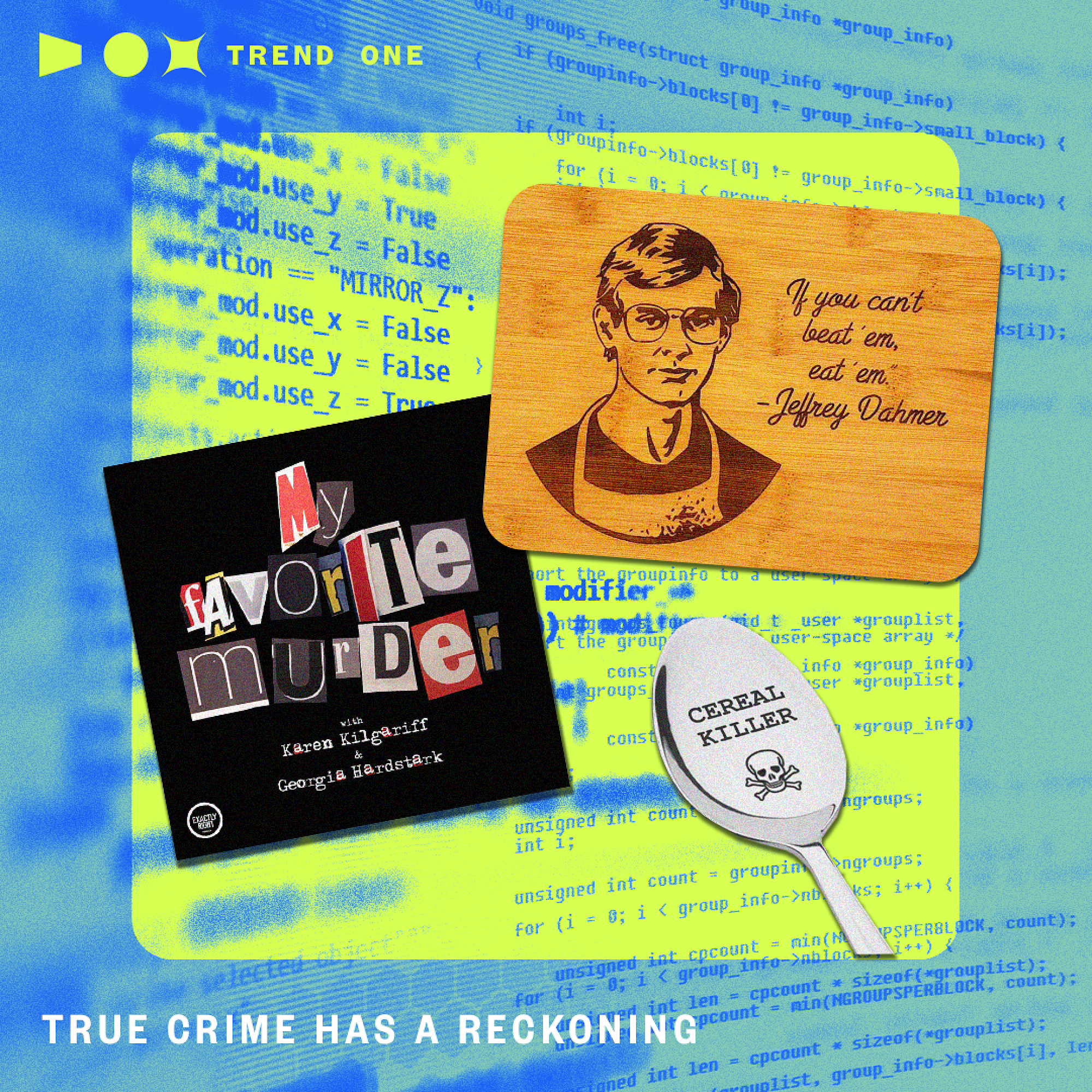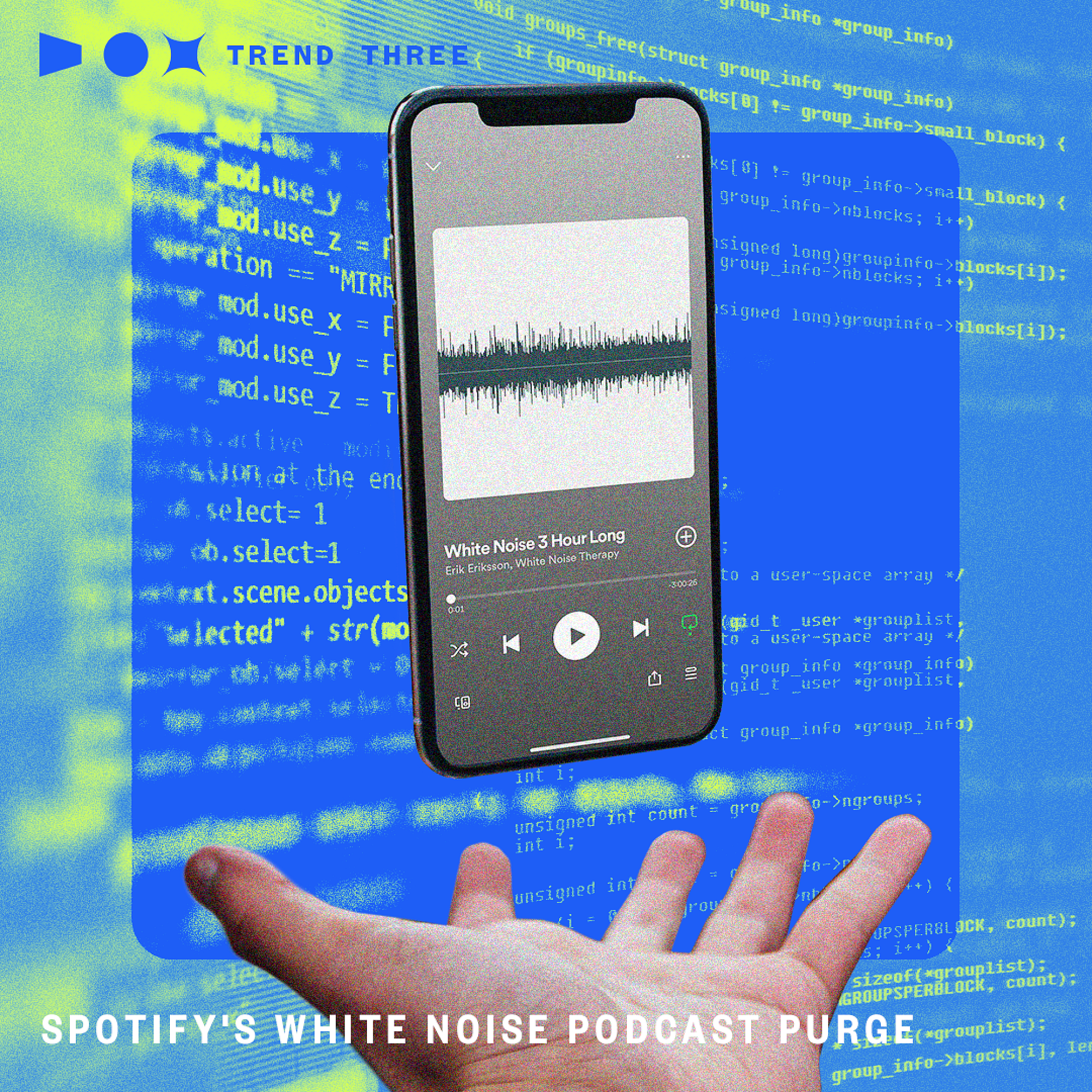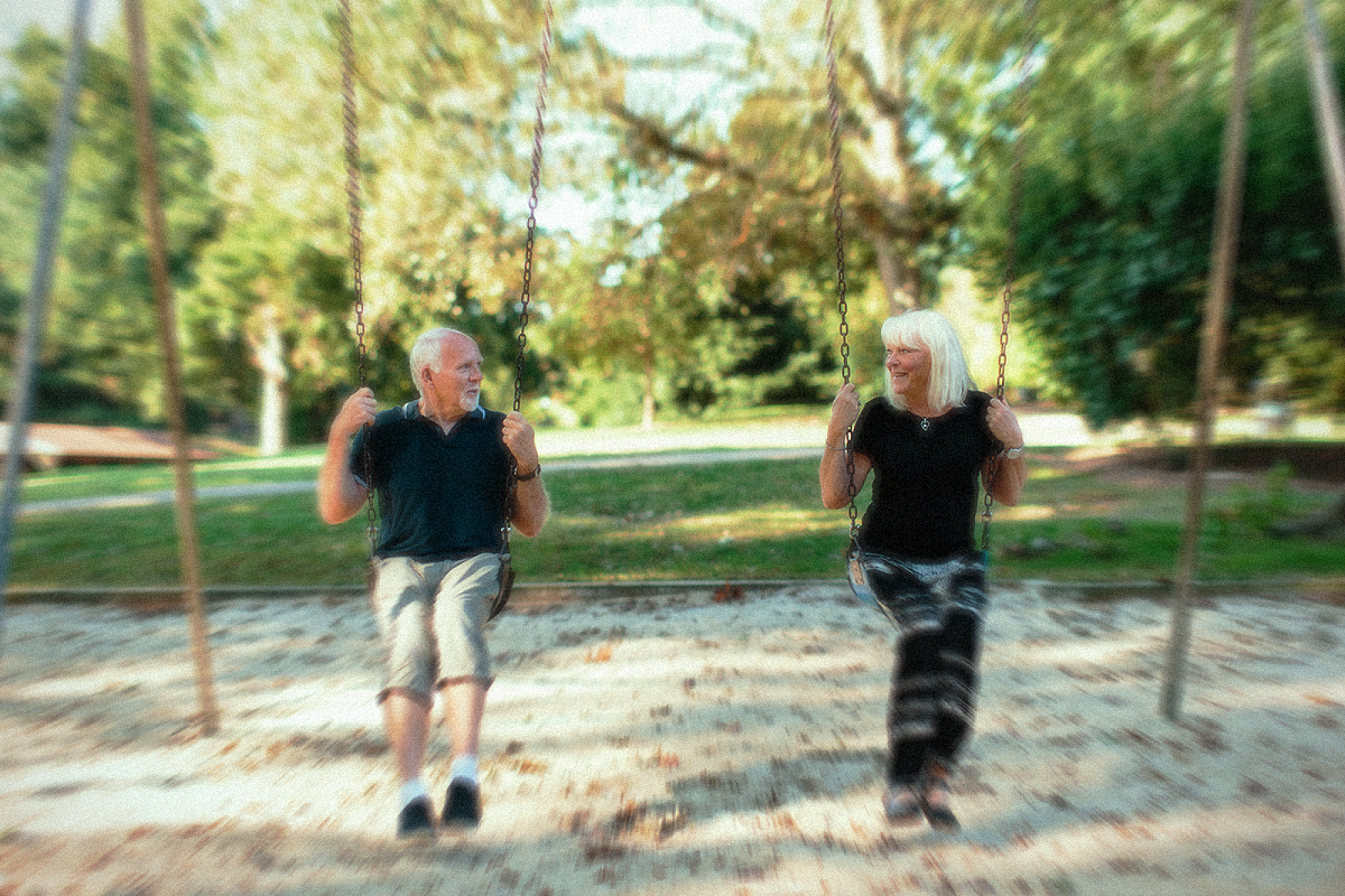This Halloween season, things are getting scarier than Hereditary or Lena Dunham painting a mural in your house. The ever-buzzy algorithm is rising in power and ubiquity, seeping into our social feeds and music platforms, and altering our perspectives—in some cases, without us knowing. Sure, the algorithm reflects our individual tastes and keeps our FYP interesting, but what’s the intangible imp doing behind the scenes?
The ways in which our algorithms have shifted—agnostic of platforms—have revealed some tears in the fabric of the social media space-time. Podcasts are reportedly disappearing from Spotify; songs are getting drastically shorter in length to be tailored to TikTok consumption; and various versions of the same memes are filling our X feeds. We’ve parsed through our likes, retweets and playlists to wrap our heads around the way the algorithm has taken over the internet. Below we break down the horror of the algorithm as we ring in the spookiest season of the year. Join us…we dare you!
True Crime Has a Reckoning
True crime’s popularity has been surging for years, but it has come under increased scrutiny recently as people question the ethics of being a fan. The genre dominates the subject matter of top-ranked podcasts and women are almost twice as likely as men to regularly listen to true crime podcasts (44% v 23%). But The Washington Post reports that some people are giving up these podcasts due to feelings of anxiety and paranoia. In addition to psychological factors, some are hitting unsubscribe because of new ways the content is being pushed and recommended to them by the algorithm. Fans are coming across suggested ads for merch that include items like a cutting board emblazoned with the face of a serial killer. Although true crime ads continue to be served up by the algorithm and 78% of podcast listeners don’t mind them, the lines between fact and entertainment continue to be blurred, and desensitizing yourself to this no matter how often it shows up on your feeds is frightening.
Ghost Hunting Is on the Rise
After years of having their everyday upended by the pandemic, Gen Z is increasingly coping through escapism, using their feeds and screens to invite in the paranormal, the mysterious and the macabre. On TikTok, #GhostHunting has surpassed more than 1.3B views. Influencers like @MyBloodyGalentine and @SpookyNewEngland have built up a steady following, while everyday influencers and commentators have begun to explore their own surroundings for signs of spooks. And they’re not only seeking out IRL ghosts—they’re driving a resurgence of scary stories in media and entertainment. Talk To Me is now A24’s highest-grossing horror movie ever. Goosebumps is about to premiere on Disney+ starring unexpected horror icon Justin Long. And podcasts like Lore and Otherworld are finding new ways to scare us all out of our senses.
Spotify's White Noise Podcast Purge
The white noise podcasts are disappearing. Individual episodes of these podcasts—which broadly include ambient noise like lapping waves consumed as background noise—have begun to be deleted. A Bloomberg report posits that the podcasts, which are numerous on the platform, are costing Spotify $38 million a year in lost ad revenue since plays of these podcasts can tally up $18,000 in advertising revenue alone for their creators. The removal of these episodes is part of Spotify's effort to streamline its content and focus on more profitable endeavors. That is to say, the algorithm is disappearing episodes to the sunken place with the intention of directing listeners to Spotify’s own white noise audio for the sake of profit. This decision, which Spotify is allegedly investigating, has sparked backlash from fans who enjoy the soothing sounds of white noise to relax or concentrate. However, in meantime if listeners are looking to use the platform to fall asleep, they can tap into Calm's sleep content now available after the two brands partnered together earlier this year.
The Sharp Incline of CGI
From Alexander Wang’s giant bra hung off the Manhattan Bridge to jewelry brand Kendra Scott suspending a massive necklace at the entrance of an Alabama sorority house to a London train adorned with a giant eyelash being brushed by a mascara wand, CGI is offering a new space for brands to play in, making headlines by blurring the lines of reality. These hyper-realistic creations are flooding social media feeds rapidly, appearing in advertisements, digital artwork, and even deepfake content, making it challenging for audiences to distinguish between reality and computer-generated imagery. As brands continue to surprise and delight their audiences, digital artists are seeking legal protection from large AI image generators that use their digital creations to teach their systems, all without the consent of the artist. With the rise of this medium comes new questions. Is there a responsibility to disclose digital creations? How can artists protect their intellectual property? Will this trend stay around long enough for us to find the answers?
Tiktok’s Answer to Spotify
If the state of music felt tired before, TikTok’s new subscription based music streaming service, TikTok Music, has the ability to turn the industry into a nightmarish landscape. Since the platform’s inception, TikTok has become enormously influential in music discovery and artist promotion. Record labels spend millions of dollars in hopes of engineering digestible, catchy (albeit generic) tracks that easily lend themselves to TikTok dances and viral sounds. In 2022, NBC reported that artists and fans alike were fatigued by this algorithmic approach to songwriting dubbed the “TikTok music formula.” A year later, TikTok’s expansion into the world of streaming comes alongside a deal with Warner Music Group, that, according to TikTok’s parent company ByteDance, will “create new revenue, marketing, and insights opportunities for WMG’s artists and songwriters, while deepening the engagement with TikTok’s huge audience.” Entangling music streaming platforms, social platforms and a major record label has created an understandable anxiety that the pressure to prioritize TikTok’s FYP algorithm when writing music will only further intensify, not to mention the fear that ByteDance may choose to exclusively push WMG releases on their platforms, making mainstream reach next to impossible for independent artists.
Repeat JokesThe Downward Trajectory of Stale Jokes
Is there anything worse than being bombarded by the same joke over and over? Many social users may be asking themselves this same question as the new For You tab on X (formerly Twitter), is giving users a bit of déjà vu, serving up the same memes and joke formats on their timeline repeatedly. This oversaturation driven by a “likes”-based algorithm is almost destroying the humor entirely, as fatigue increases with each repeated view. As a result, the window of opportunity for trending jokes on social media is shrinking, giving brands only a 24-hour span to get the last laugh before these formats start to feel cringeworthy.










